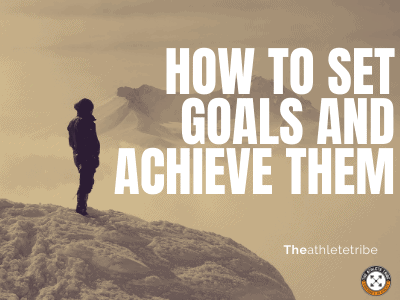Goal setting is always discussed at the start of January – New Year, New You, etc. But let’s be fair, how many of those goals do we actually achieve, or even progress towards?
Setting clear goals is essential; it gives us direction and motivation. But we often place a higher focus on the goal itself, rather than the journey of achieving it.
What should be focusing on goal setting?
We should be looking into how to develop and improve processes to reach those goals. That’s what is truly going to help us. I find myself saying it to myself and my clients. Small daily progression is the only way to improve and consistently move towards achieving your goals.
How do we do this?
“Structure brings freedom”.
I first heard that from Craig Ballantyne, who wrote “The Perfect Day Formula”. The more structure we can build into our day, the more free time we will have.
Time is the most significant currency that we have to trade. Everyone wants our time. And lack of time is the number one reason people do not achieve their goals.
I am sure that most of us have heard of dopamine. It is a neurotransmitter that helps with motivation, attention and therefore learning. We need to understand that our brains cannot determine when to make and when not to make dopamine. For example, if you start watching a TV series, dopamine will begin to be produced. The question is, by watching these series, is it moving you towards your goal? Of course, I am not saying that you should not watch TV, Netflix, Prime or whatever you choose to use.
What I am saying is that you need to put structure on it, a time limit. Otherwise, that next episode will start to play. And the next thing you know, 3 hours have gone, and then you go to bed late. This leads to reduced sleep, poor performance, increased hunger, and so on.
Think about Parkinson’s Law, which states that work expands to fill the time allotted. If you give yourself one hour to complete a task, it will likely fill that one hour.
How does structure affect this?
-
Answering emails – some of us could easily spend hours answering and sending emails. But is this effective?
-
Multi-tasking rule – switching from task to task is hugely ineffective from a cognitive perspective, both in performance and energy. In 2016 I started working with cognitive athletes based in leading businesses and organisation. Everyone used the term agile when talking about work; for me coming from sports, agile means the ability to change direction — the same in business. However, a change of direction requires energy. I see lots of energy being used by switching from one task to the next, and then back again.
-
A sense of control. An emphasis on “sense”. You have a gameplan; you are proactive in what you do. You can keep developing and moving forward.
How can we start creating processes and systems?
For one week, write down everything you did, and for how long. Audit your time. I understand that this might take time, but it will be massively beneficial in the long run.
Use this list to create structure during your day and week:
-
Time blocking. Use this for any communication – email, messaging etc.
-
Your goals need time and focus, so book a meeting in with yourself. This acts as a reminder and frees up the time. If someone has access to your time, inform them that this is a closed time in your calendar.
Create an assessment check-in. Failure will happen; progress is not linear, and not perfect. We need to assess what is working and what we can change.
-
Once or twice per week, have a short performance review with yourself. It can be as simple as:
-
What went wrong/badly?
-
What went well?
-
What can be improved?
Feedback is a massive area that we all need to improve in giving and getting it. I have worked in professional sports; feedback is everywhere – data in the gym, training pitch, video analysis of the game and coach discussions. But for me, there was little feedback around the soft skills (this is a term I hate, as it sounds as if they are not essential, which is far from the truth). Yes, communication has a significant role in a team’s success, but that is not only the 80-90 mins on game day. It’s at the training ground, travelling and post-match.
Remember that processes take time to implement, see what sticks, redesign and reimplement. When working with athletes, there is always this feeling of a need to change a training programme. And actually, we are still getting physical development from it. Like with investing in index funds, we are looking for compound interest over the long term period.
I hope that this has helped. Please head over to either the YouTube Channel or our new Podcast Channel to listen to the episode on goal setting.
Keep moving forward
Lee
Director & Founders

